Outline:
Welcome to the exciting world of e-learning website design! If you’re looking to create an online learning environment that captivates and educates students, you’ve come to the right place. At the heart of a successful e-learning website is the interactivity and user experience it offers. Luckily, with the help of eLearning development services, designing an effective e-learning website has never been easier.
In this article, we’ll explore the key elements of e-learning design, including interactivity, user experience, and accessibility. We’ll also take a closer look at the top 10 e-learning websites and platforms, providing insights and inspiration for your own e-learning project.
Whether you’re an educator, a training professional, or simply someone interested in online learning, we’re here to share valuable tips and best practices that will help you design an e-learning website that engages and educates students.
Breaking Down Barriers: How E-learning Websites Make Education Accessible
Have you ever found yourself exhausted after a long commute to a physical classroom or uncomfortable asking questions in front of others during class? These are just a few of the common difficulties faced by students undergoing offline training. Fortunately, e-learning websites provide a solution to these problems and many more.
One of the biggest advantages of e-learning websites is that they eliminate the need for physical travel to a classroom. This saves students time and effort and allows them to study from the comfort of their own homes. By removing the stress of travel, e-learning websites can help students better retain information and improve their overall learning experience.
Another issue with traditional classroom settings is the pressure students can feel when surrounded by their peers. They may hesitate to ask questions or seek clarification for fear of appearing foolish or slowing down the pace of the class. E-learning websites provide a safe and private learning environment where students can learn at their own pace and ask questions without judgment.
In addition, traditional education often only offers private lessons or tutoring for those who require a more personalized approach to learning, but these options can be expensive. E-learning websites provide affordable access to a wealth of educational resources, including interactive videos, quizzes, and simulations, all designed to enhance the learning experience.
Overall, e-learning websites offer a more convenient, comfortable, and flexible approach to education. Whether you’re a busy professional looking to upskill, a student seeking additional resources to supplement classroom learning, or someone simply looking to learn something new, e-learning websites can provide a valuable and accessible solution.
Empowering Students: The Advantages of E-learning Over Traditional Classroom Settings
E-learning websites offer students the flexibility to study in a convenient and suitable environment, but that’s just one of the many benefits they provide. Let’s take a closer look at some of the other advantages of e-learning.
One of the key benefits of e-learning is the high level of engagement it provides. With a wide range of materials available for acquiring knowledge, students can monitor their progress and engage in practical tasks that require their full attention. This level of involvement enhances motivation and increases the speed and quality of the learning process itself.
In addition, e-learning is highly time- and cost-effective. Students save time and money on transportation and study supplies, while course owners save on the costs associated with renting premises and equipment. Many routine processes are also automated, making e-learning a cost-effective solution without sacrificing quality.
Another advantage of e-learning is the easy access it provides to training. Students can access e-learning resources from anywhere in the world and at any time, as long as they have an internet connection and a device to access the materials. Course owners and employees can also access resources from their devices, making e-learning a highly convenient option for everyone involved.
To further enhance the accessibility of e-learning, it’s important to provide users with a corresponding application or a responsive version of the website. This ensures that students can access the materials from any device, making e-learning even more advantageous in their eyes.
Overall, e-learning provides a highly engaging, time- and cost-effective, and accessible solution for acquiring knowledge and skills. With the ability to study from anywhere and at any time, it’s no wonder that e-learning is becoming an increasingly popular choice for learners and course owners alike.
Maximazing the Effectiveness of Your E-learning Website
While e-learning websites offer numerous benefits, it’s important to be aware of their potential drawbacks so that you can take precautionary measures when developing your own resource. Let’s take a closer look at some of the cons of e-learning.
One of the main cons of e-learning is the technical requirements it may impose on students. For example, some types of classes may require advanced devices such as virtual reality headsets, which not all students may have access to. To ensure education is available to all students, it’s worth considering the technical equipment required for the course and providing it if necessary.
In addition, e-learning requires minimal technical skills, which may be a barrier for some users. Course owners should assess the average level of technical skills of their users and provide instructions for interacting with the course, as well as technical support to assist with any questions or issues that arise. To avoid complications or troubles, it’s also advisable to make the website interface user-friendly and intuitive.
Another potential drawback of e-learning is the lack of emotional contact between students and teachers or peers. Without this emotional connection, motivation to learn may decrease over time. To mitigate this, it’s important to provide students with opportunities for discussion and interaction, such as a student chat for group training or a chat with a teacher for individual courses.
To ensure the effectiveness of your e-learning website, it’s important to conduct a checklist to verify its efficiency and identify areas for improvement. This checklist should include elements such as accessibility, user-friendliness, technical requirements, and opportunities for interaction and engagement.
Overall, while e-learning websites offer many benefits, it’s important to be aware of their potential drawbacks and take precautionary measures to ensure the best possible learning experience for all users. By addressing technical requirements, providing clear instructions and technical support, and fostering opportunities for interaction and engagement, you can create an e-learning website that offers an effective and enjoyable learning experience.
Result-Oriented Lessons: How to Keep Your Students Motivated and Engaged
To create a top-notch e-learning website, there are some key elements that you need to keep in mind. First off, it should be interactive – that means incorporating tests, simulations, and other techniques to help students apply the knowledge they’re gaining in real-life scenarios. This makes the learning process more engaging and helps with better retention of the material.
It’s also important for your website to be result-oriented. Each lesson should show students an intermediate result, and each course should ultimately lead them to their main goal – gaining a skill or knowledge. This way, students can see that the time, money, and effort they’ve invested in your website were well worth it.
But don’t forget to keep things simple! Complex topics can be overwhelming, so breaking lessons down into smaller, more manageable pieces will make the learning process easier and more effective.
Of course, accessibility is key too. You want to make sure that your students have no technical difficulties accessing your website, and that it works seamlessly on all devices.
Last but not least, a well-orchestrated e-learning program is essential for success. Each lesson should be thought out in detail, and delivered in the most suitable format – be it video lectures, webinars, audio, images, presentations, tests, or simulators.
The Importance of Eye-Catching Design in E-learning Websites
First things first, pick the right Content Management System (CMS) for your needs. With so many options out there, from WordPress to Drupal, it’s essential to do your research and choose a platform that fits your goals and requirements.
Next up, design is key! Your e-learning site needs to look captivating and eye-catching to make a great first impression. Don’t forget about consistency in your design across all pages and elements, as it can make or break your brand image.
Communication is key, so make sure to provide various contact forms for your users. This way, they can easily address their questions and concerns, leave reviews or feedback, and report any issues they may encounter.
Show off your expertise! Highlight your certificates and testimonials to showcase your professionalism and experience. This can significantly increase the perceived value of your courses.
Finally, don’t forget to add powerful call-to-action (CTA) buttons throughout your site to motivate users to take action, such as signing up for courses or subscribing to your newsletter.
Now that you have the practical tips and tricks, it’s time to get to work and create an e-learning website that will inspire, engage, and educate your audience!
Top 10 Examples of Best E-learning Websites
These and other steps will substantially contribute to the website’s effectiveness and will ensure its prosperity in this competitive market. And to encourage you to develop a truly appealing website, we have prepared the top 10 e learning sites according to Ester Digital.
01 Saleshero
Saleshero offers its users various fascinating programs of any level (from beginner to advanced) that are designed for sales engineers. They also provide both group and individual coaching, which is extremely convenient, as long as group training is not suitable for everyone. Moreover, except for the valuable content, there are also books that the students may find helpful on their way to sales engineering.
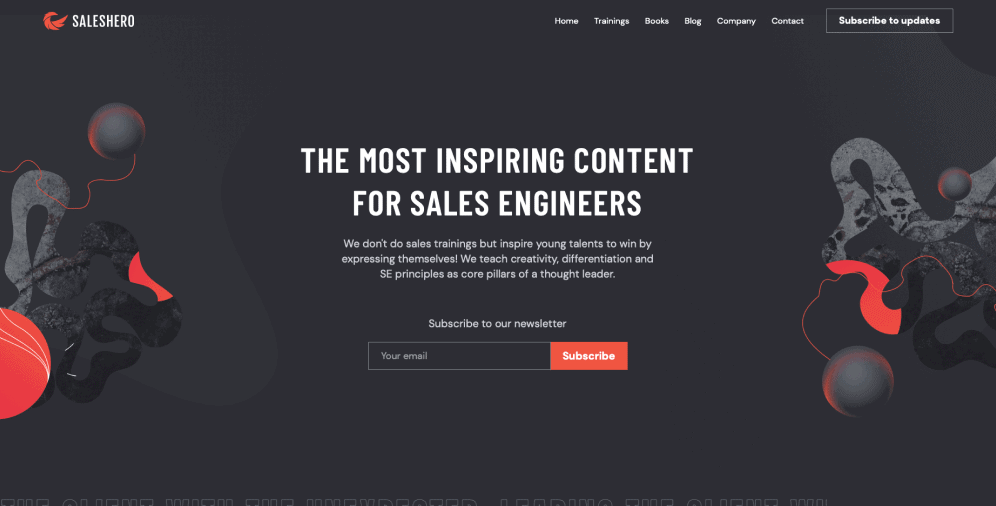
02 FlowRepublic
FlowRepublic is an e learning company that aims at leveling up and strengthening both the soft and hard skills of professionals through the provision of diverse coaching and training programs. Their services are available for individuals and businesses, which means that the knowledge they offer may be of much help at any scale. Furthermore, students can fully trust FlowRepublic since its expertise is recognized by such giants as Deloitte, PWC, and Cloudity.
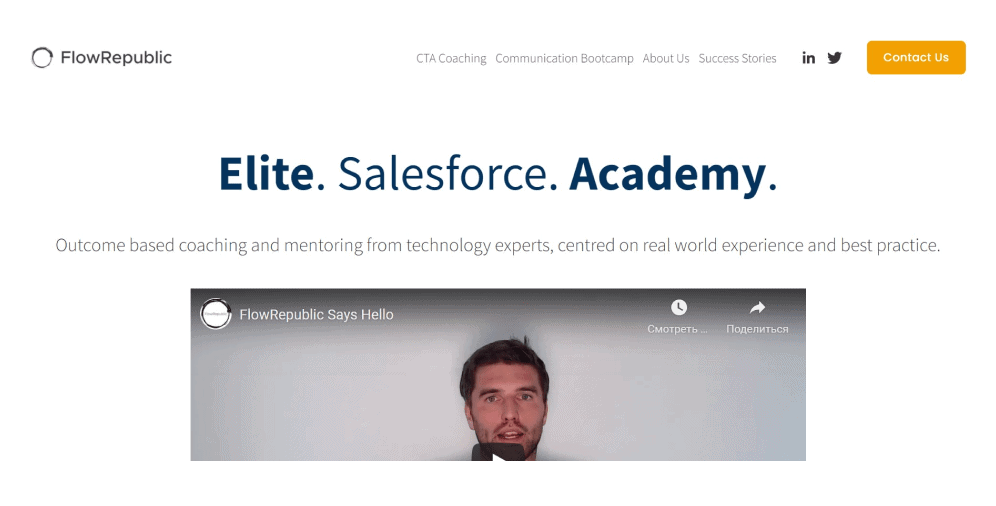
03 Udemy
Udemy is an extremely popular e learning platform. It can boast of more than 175 thousand courses and more than 46 million learners. Sounds huge, right? It seems that here, users can find any course they like, from web development to home improvement and gardening. As long as people perceive information diversely, the materials Udemy provides are of different forms (PDF files, presentations, texts, and videos), which is so thoughtful and deliberate.
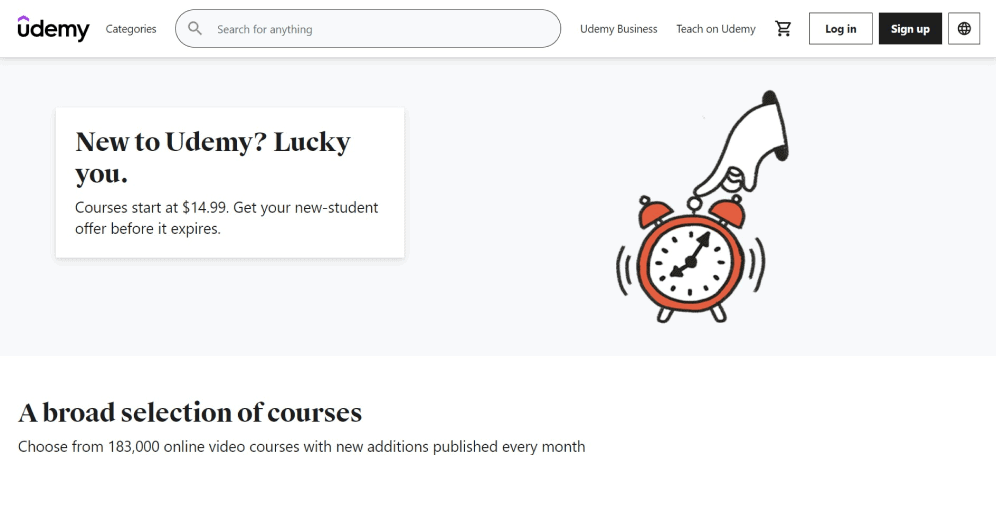
04 Skillshare
Skillshare offers thousands of video courses on diverse topics such as photography, SEO optimization, marketing, design, and other popular directions. The classes are made in the format of video lessons accompanied by projects. Projects stand for homework — exercises or any other assignments teachers give their students. For example, if it’s a course on painting, then the project may be to make a sketch or a drawing. And this presence of homework implies a complex approach to learning since doing such tasks helps students consolidate the knowledge gained.
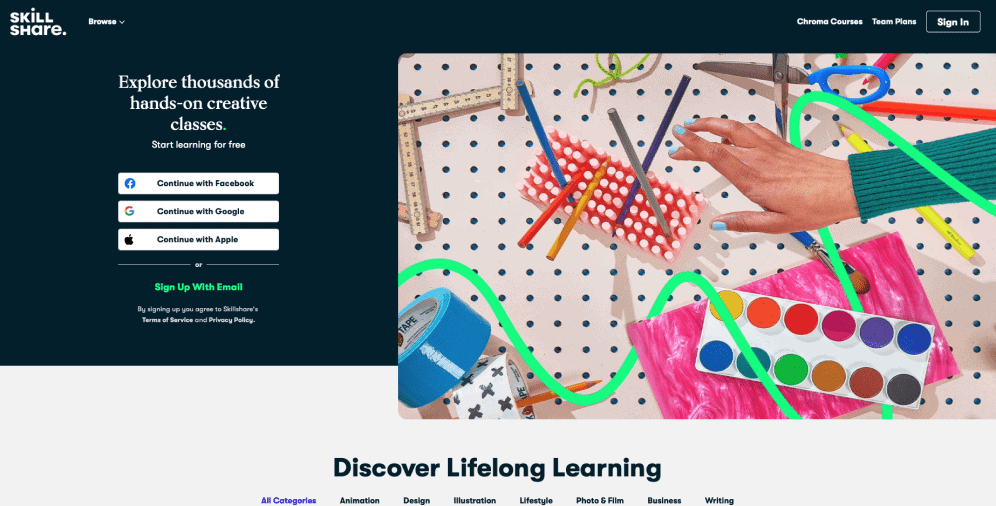
05 EdX
EdX is a leading provider of Massive Open Online Courses (MOOC) that suggests receiving education from dozens of the world’s best universities, including MIT, Harvard, Cornell, Caltech, and others. There are more than 650 courses (some of them are free) that are delivered by highly qualified teachers and experts. After the course completion, students get corresponding certificates. And probably no one can argue that an opportunity to get knowledge from such well-known and prestigious universities without the need to pay a king’s ransom is truly precious.
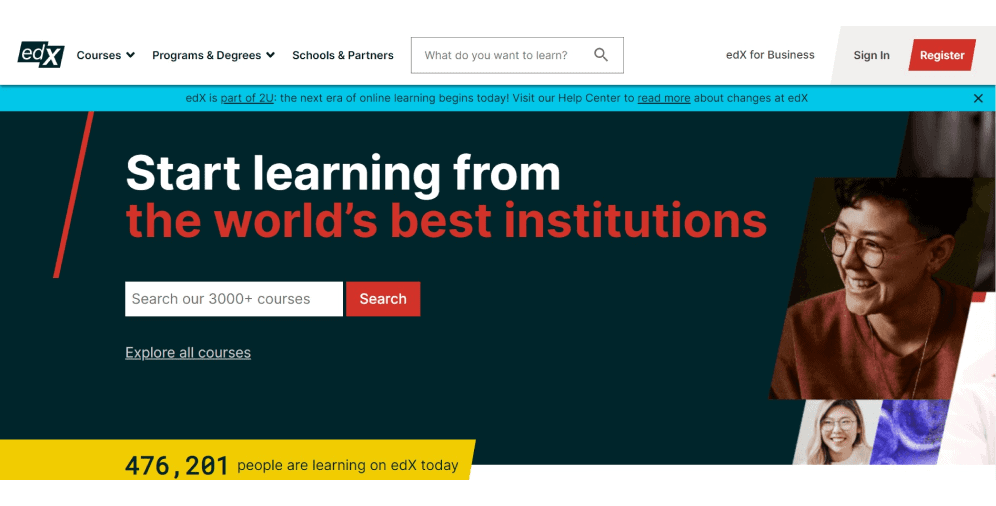
06 Curious
Curious is an online learning service with an unusual concept. Here, students indicate the areas of their interest, while the system itself selects the most helpful classes. In addition, the number of lessons varies depending on how much time the users are willing to devote to studying each day. Initially, the site was created so that teachers and talented people around the globe could share their knowledge and skills. That’s why the range of categories provided is enormous, and everyone will find something appealing here.
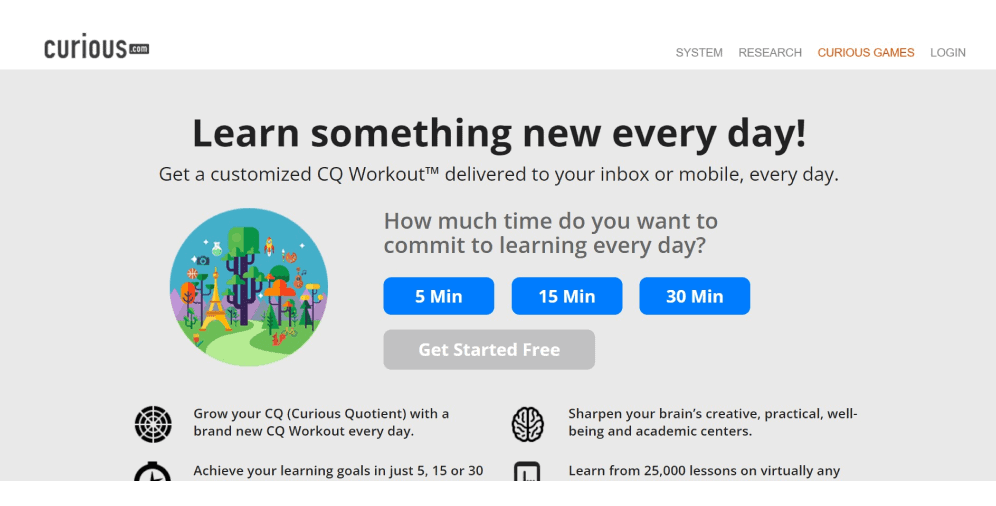
07 Codecademy
Codecademy is a world-renowned educational online project in the field of programming. There are many courses on different topics on this platform: from Java and Ruby to HTML and CSS. And many of them are provided for free. The mission of this project is to make it possible for everyone to create something meaningful with the help of technology. That’s why students here are offered various learning tools and resources that will help them to bring any bold idea to life.
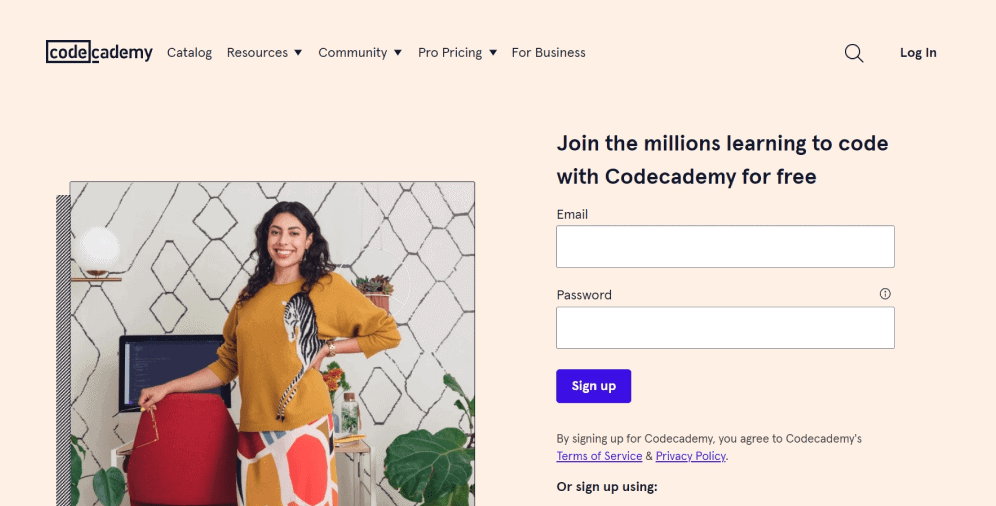
08 FutureLearn
FutureLearn is a British e learning platform with over 900 courses conducted by teachers and professors from the greatest educational institutions. The platform offers both paid and free training programs, after which students get international certificates. Among the courses presented here, users can find those of completely diverse areas: psychology, history, business, science, high technology, medicine, problems of modern society, and many others — so that everyone can find a course to their taste.
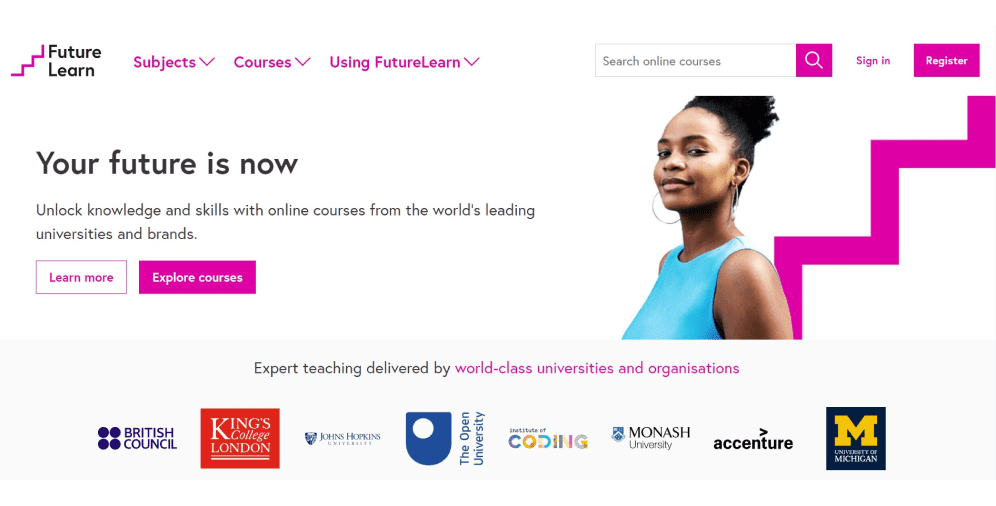
09 Canvas Network
Canvas Network is a platform for studying different disciplines. Here, users can acquire numerous interesting and necessary skills from universities and leading organizations and companies. Programs allow students to gain practical and theoretical knowledge on certain subjects. By the way, most of the courses are provided for free, and the average duration is several months.
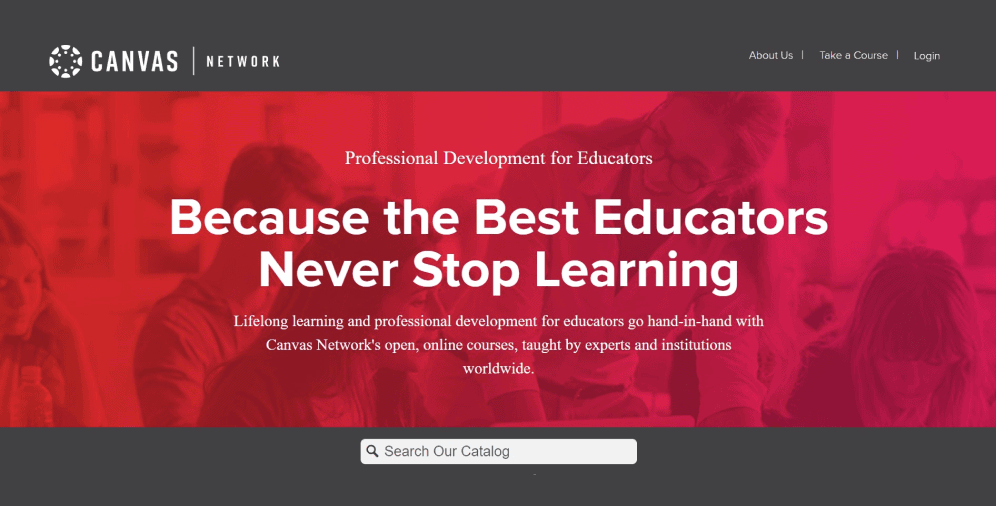
10 Drawspace
Drawspace is an e learning platform where users can find a huge collection of free downloadable lessons that will teach them how to draw or help them improve their skills. Accordingly, Drawspace is suitable for both experts and beginners. It is also a kind of a community of enthusiastic artists, professionals, and educators. Moreover, this resource offers classes not only on painting in graphic editors but also on traditional drawing on paper. And that makes this platform attractive to those who are eager to make money on it and those who have always wanted to do it as a hobby.
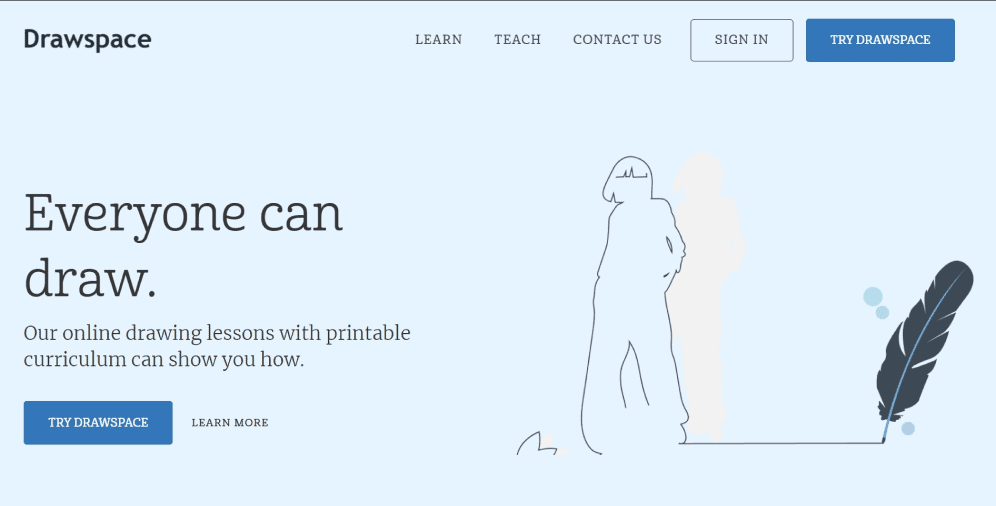
These examples show how EdTech platforms of different areas present their courses and what features they possess to stand out from the rest, thus catching the attention of users.
On a Final Note
In summary, an e-learning website can be a powerful tool for education and training, offering benefits such as convenience, engagement, and cost-effectiveness. However, it’s important to be aware of potential technical requirements and the need for technical skills among users.
To create an effective e-learning website, it should be interactive, result-oriented, simple, available, and orchestrated. Other practical considerations include choosing a suitable CMS, designing the website, providing contact forms, displaying certificates and testimonials, and adding CTAs.
Ultimately, the purpose of the e-learning website should be clearly defined and kept in mind throughout the development process. If you have any questions or need help with your e-learning project,don’t hesitate to reach out to us for assistance.





